How to Get a Non-QM Loan During a Chapter 13 Bankruptcy: A Comprehensive Guide
Securing a mortgage while undergoing a Chapter 13 bankruptcy may seem challenging, but it is possible—especially when exploring Non-QM (Non-Qualified Mortgage) loans. While traditional lenders focus heavily on a borrower’s credit score, income documentation, and DTI (Debt-to-Income) ratio, Non-QM loans provide more flexibility, making them an ideal option for borrowers going through bankruptcy or those with unique financial situations.
This comprehensive guide will explain how you can secure a Non-QM loan during a Chapter 13 bankruptcy, the advantages of these loans, and the steps you need to take to improve your chances of approval. Additionally, we will include helpful links for further resources on Non-QM loans and Chapter 13 bankruptcy processes.
What is a Non-QM Loan?
A Non-QM (Non-Qualified Mortgage) loan is a type of mortgage that does not meet the strict criteria outlined by the Consumer Financial Protection Bureau (CFPB) for Qualified Mortgages (QMs). While QMs are subject to strict underwriting standards, Non-QM loans are designed for borrowers with more complicated financial situations, such as:
•Self-employed borrowers with fluctuating income
•Borrowers with poor credit scores
•Borrowers who have filed for bankruptcy
•Foreign nationals or borrowers without traditional income documentation
Non-QM loans are more flexible than conventional loans, which makes them an excellent option for borrowers who might not qualify for a traditional mortgage. These loans often have higher interest rates due to the increased risk lenders take on, but they can be a valuable tool for homebuyers with unique financial circumstances.
How Chapter 13 Bankruptcy Affects Your Ability to Get a Loan
Chapter 13 bankruptcy involves a court-approved repayment plan in which you agree to pay back a portion of your debts over a period of three to five years. While Chapter 13 bankruptcy helps individuals reorganize their finances and avoid foreclosure, it can create challenges when applying for a mortgage.
Key Considerations When Applying for a Mortgage During Chapter 13 Bankruptcy
1.Discharge and Re-Establishment of Credit
Chapter 13 bankruptcy is designed to help you manage your debts, but it can lower your credit score and make securing traditional financing more difficult. A typical requirement for a conventional loan is a credit score of at least 620, and even for FHA loans, a score of 580-620 may be required. However, because Non-QM loans don’t have the same stringent credit score requirements, they provide a path to homeownership despite a bankruptcy.
2.Proof of Ability to Repay
One of the biggest hurdles during a Chapter 13 bankruptcy is proving that you can make monthly mortgage payments. This is especially important in the context of a Non-QM loan, as lenders need to feel confident that you can handle the added responsibility.
3.Court Approval for New Debt
In most cases, borrowers in Chapter 13 bankruptcy must obtain permission from the bankruptcy court before taking on new debt, including a mortgage. If you’re interested in getting a Non-QM loan, it’s essential to consult your bankruptcy trustee or attorney to ensure that your loan application will not violate the terms of your repayment plan.
4.Waiting Periods After Bankruptcy
Unlike traditional loans, which often require a waiting period after a Chapter 13 bankruptcy discharge (typically 2 years for conventional loans), Non-QM loans can sometimes offer more flexibility. While some Non-QM lenders may still require a waiting period, others are more willing to consider you even if you’re still under a Chapter 13 repayment plan.
How to Get a Non-QM Loan During a Chapter 13 Bankruptcy
Securing a Non-QM loan during Chapter 13 bankruptcy involves specific steps to ensure your loan application is approved. Here’s how to increase your chances of securing financing:
1. Complete Your Chapter 13 Bankruptcy Plan
Before applying for a Non-QM loan, ensure that you are up-to-date with your Chapter 13 bankruptcy payments. Lenders typically want to see that you have demonstrated the ability to make timely payments to creditors as part of your repayment plan. Your bankruptcy trustee may also need to confirm that you are in compliance with the court’s order before proceeding with a mortgage application.
2. Seek Permission from the Bankruptcy Court
In most cases, borrowers in Chapter 13 bankruptcy are required to seek approval from the court before taking on new debt, including a mortgage. The court may grant approval if it can be shown that your new mortgage payment is affordable and doesn’t interfere with your ability to meet your repayment plan obligations.
Make sure you have documentation proving that your bankruptcy court is aware of and has authorized the mortgage, as lenders will need to see this approval before moving forward.
3. Shop Around for Lenders Specializing in Non-QM Loans
Not all lenders offer Non-QM loans, and not all Non-QM lenders are willing to work with borrowers who are in Chapter 13 bankruptcy. It’s important to find a lender who specializes in these types of loans and who is comfortable working with individuals going through bankruptcy. The right lender can help you navigate the process and determine the best loan product for your specific financial situation.
You can begin your search for lenders by visiting websites such as The Mortgage Reports or Non-QM Loan Resources to find trusted Non-QM lenders in your area.
4. Prepare Documentation of Your Financial Recovery
When applying for a Non-QM loan, you’ll need to provide various forms of documentation that demonstrate your ability to repay the loan. These documents may include:
•Proof of income: This could be pay stubs, tax returns, or bank statements, depending on your income source. If you are self-employed, you may need to show additional documentation, such as profit-and-loss statements or 1099 forms.
•Proof of timely bankruptcy payments: Lenders will want to see that you have made timely payments toward your Chapter 13 repayment plan. You may be asked to provide a statement from your bankruptcy trustee.
•Down payment: Some Non-QM loans may require a larger down payment than conventional loans, especially if you are in Chapter 13 bankruptcy. Be prepared to provide a significant down payment to increase your chances of approval.
5. Strengthen Your Credit Profile (If Possible)
While Non-QM loans are more flexible with credit score requirements, improving your credit score before applying can make you a more attractive borrower. Here are some steps you can take to strengthen your credit profile:
•Pay bills on time: Ensure that all your bills are paid on time, including your Chapter 13 bankruptcy payments. Late payments can further damage your credit score.
•Check your credit report: Review your credit reports for any errors and dispute inaccuracies with the credit bureaus.
•Reduce credit card balances: Pay down outstanding credit card balances to reduce your credit utilization ratio, which can improve your score.
Benefits of Non-QM Loans During Chapter 13 Bankruptcy
Non-QM loans offer several key advantages for borrowers in Chapter 13 bankruptcy:
1.Flexibility with Credit Scores
Unlike conventional loans, which have rigid credit score requirements, Non-QM loans allow for a wider range of credit scores, which can be beneficial if your bankruptcy has caused a dip in your credit rating.
2.No Need for Full Income Documentation
Self-employed borrowers or those with non-traditional income sources may find Non-QM loans appealing because these loans do not require full income documentation like traditional loans. This can make it easier to secure a mortgage if your income is not consistently documented.
3.Easier Approval During Bankruptcy
One of the primary benefits of Non-QM loans is that they offer greater flexibility to borrowers who are in Chapter 13 bankruptcy. Some Non-QM lenders may approve loans even if you are still in the repayment phase, which can be a huge advantage over conventional loan options.
4.More Affordable Payments
Non-QM loans often come with competitive interest rates, which can result in more affordable monthly payments. While interest rates may be higher than those of conventional loans, they are typically lower than the rates on subprime loans.
Challenges of Non-QM Loans During Chapter 13 Bankruptcy
While Non-QM loans are a great option for many borrowers, there are some challenges to consider:
1.Higher Interest Rates
Non-QM loans tend to have higher interest rates than conventional mortgages, which could lead to higher monthly payments. However, the flexibility they offer often outweighs this drawback for borrowers with unique financial circumstances.
2.Higher Down Payments
Many Non-QM lenders may require larger down payments, especially for borrowers in Chapter 13 bankruptcy. Be prepared to make a significant down payment to secure your loan.
3.Limited Lender Options
Since Non-QM loans are less standardized than conventional loans, you may have fewer lenders to choose from. It’s crucial to find a lender who is comfortable with your bankruptcy status and able to work with you.
Conclusion: Navigating a Non-QM Loan During Chapter 13 Bankruptcy
Getting a Non-QM loan during a Chapter 13 bankruptcy is possible, but it requires careful planning and preparation. By completing your bankruptcy plan, obtaining court approval, and shopping for the right lender, you can increase your chances of securing a mortgage. Non-QM loans offer flexibility, which is especially valuable for those with complicated financial situations, like ongoing Chapter 13 repayment plans.
Remember to consult with a bankruptcy attorney or trustee to ensure that taking on a new mortgage does not violate the terms of your repayment plan. With the right strategy, you can successfully navigate the mortgage process.

